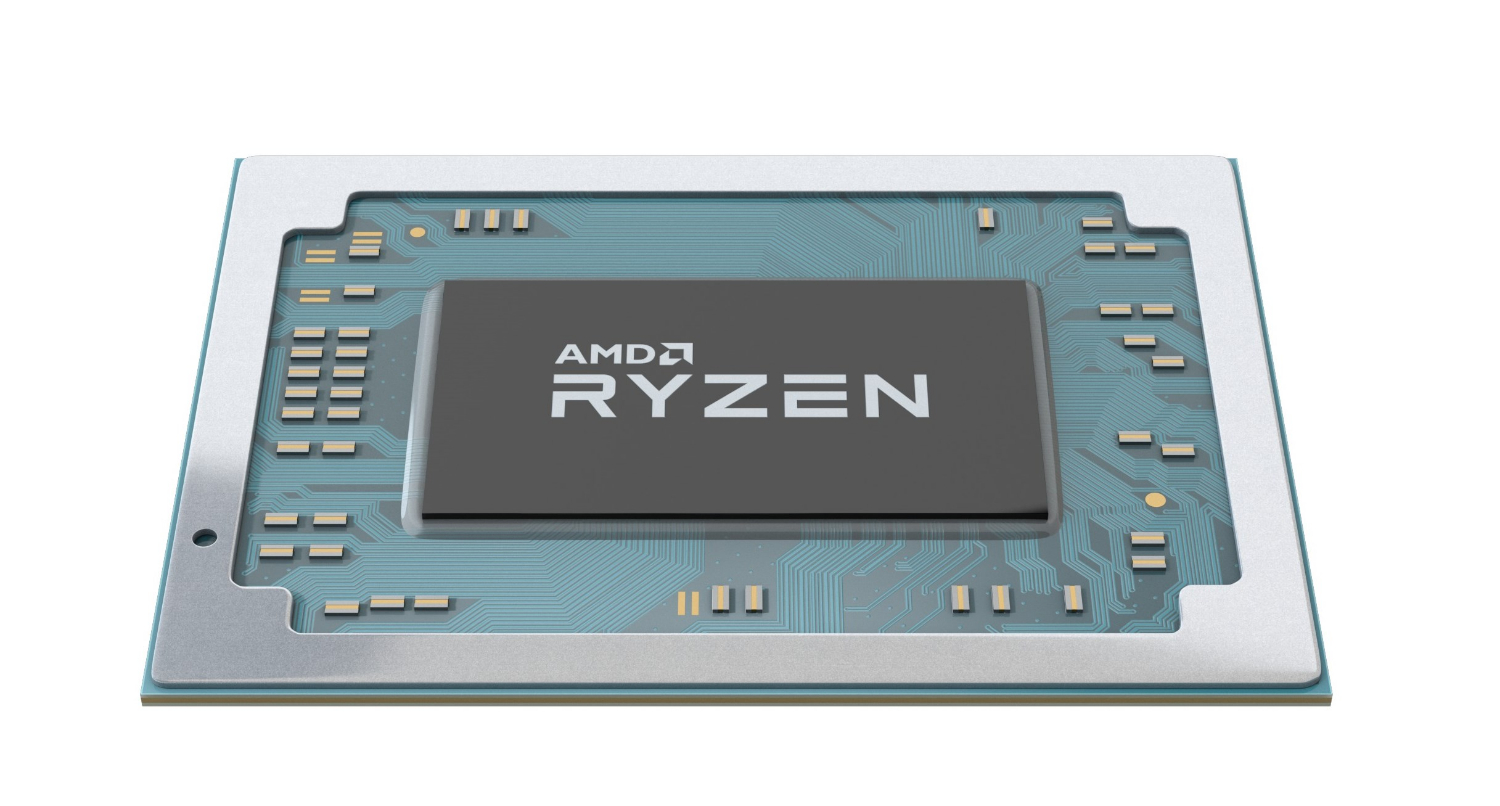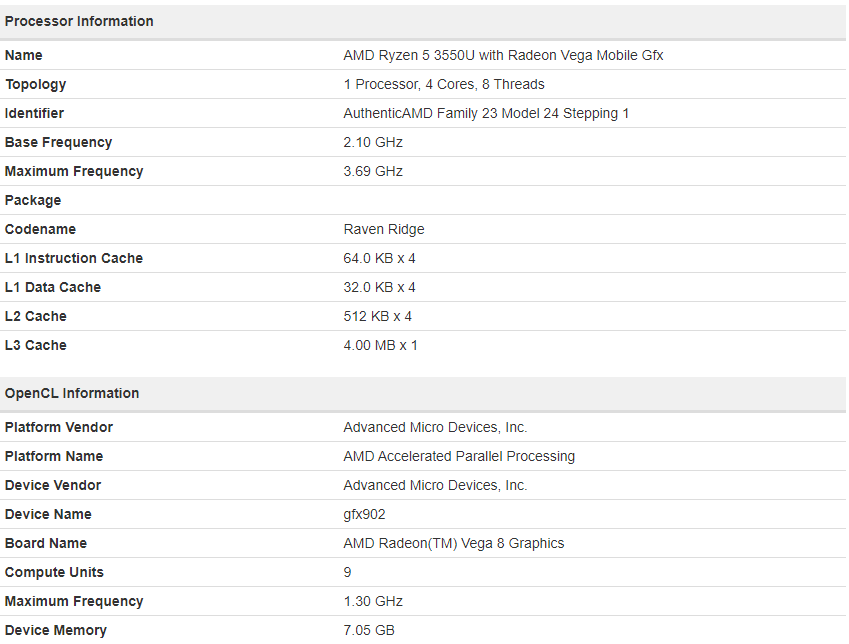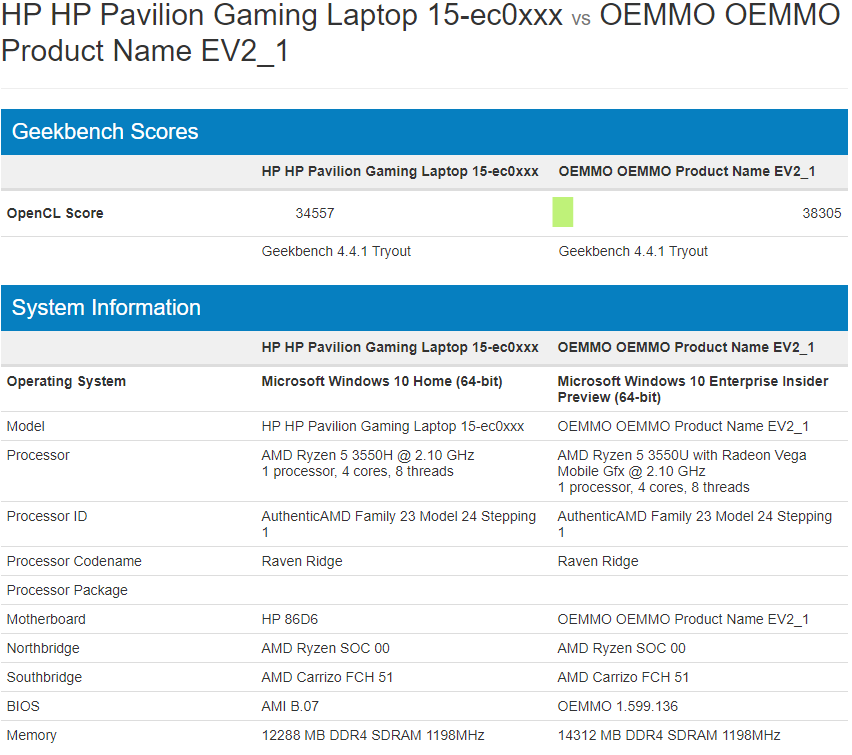AMD Ryzen 5 3550U Geekbench Listing Points to Vega 9 Graphics
If you think AMD is done with its Picasso line of APUs, you've got another thing coming. The AMD Ryzen 5 3550U, which is thought to be the 15W version of the Ryzen 5 3550H, has made its first appearance, with two pages on Geekbench.
The Picasso family is comprised of two bloodlines. The U-series chips focus on energy efficiency and, therefore, abides by the 15W TDP (thermal design power). The H-series, which targets the gaming segment, has more breathing room as it's confined to a 35W envelope. AMD launched the Ryzen 3000-series APUs in January, but it turns out that the chipmaker could be working on more models, with one of them being the Ryzen 5 3550U.
Specs
| Row 0 - Cell 0 | Cores / Threads | Base Clock | Boost Clock | L3 Cache | TDP | Graphics | Compute Units | Shaders | Graphics Frequency |
| AMD Ryzen 5 3550H | 4 / 8 | 2.1 GHz | 3.7 GHz | 4MB | 35W | Radeon Vega 8 | 8 | 512 | 1,200 MHz |
| AMD Ryzen 5 3550U* | 4 / 8 | 2.1 GHz | 3.69 GHz | 4MB | 15W | Radeon Vega 9 | 9 | 576 | 1,300 MHz |
*Specifications in the table are unconfirmed
On the computing side, the Ryzen 5 3550U doesn't raise any alarms. According to Geekbench, it's still a quad-core chip with eight threads and 4MB of L3 cache. Geekbench 4 detects the Ryzen 5 3550U as having a base clock of 2.1 GHz and a maximum boost clock of 3.69 GHz. The software seems to think that the processor has Radeon Vega 8 graphics. However, the devil is in the detail.
AMD utilizes a pretty straightforward nomenclature for the integrated graphics solutions on its APUs. Vega is obviously the GPU microarchitecture, while the number after it stands for the number of Compute Units (CUs) onboard. So, Vega 3 has three CUs, Vega 6 comes with six CUs, Vega 8 arrives with eight CUs and successively. Geekbench 4 actually lists the Ryzen 5 3550U with nine CUs; therefore, the Ryzen 5 3550U should incorporate Vega 9, not Vega 8. Since each Vega CU houses up to 64 shaders, Vega 9 should have 576 of them at its disposal. According to Geekbench 4, Vega 9 runs at 1,300 MHz.
When comparing the two, Vega 9 seemingly delivers up to 10.85% more performance than Vega 8. The difference in performance is expected, considering that Vega 9 has one extra CU while also running 100 MHz faster than Vega 8.
If you're familiar with AMD APUs, the chipmaker's existing Vega configurations include Vega 3, Vega 6, Vega 8, Vega 10 and Vega 11. So the big question here is why would AMD suddenly decide to introduce the Vega 9 flavor so late in the game? Well, Intel Ice Lake could be the answer. With the arrival of the 10nm chips, AMD might be looking for a way to one-up Intel.
Get Tom's Hardware's best news and in-depth reviews, straight to your inbox.

Zhiye Liu is a news editor, memory reviewer, and SSD tester at Tom’s Hardware. Although he loves everything that’s hardware, he has a soft spot for CPUs, GPUs, and RAM.
-
rafaelramax Leaked specs are hardly on par with actual parts and that seems to be the case here. Based solely on the specs, it doesn't make much sense to me that H variant would actually be designed with a higher TDP than the U counterpart. Both are 4C8T at same base/boost clocks, but the U unit has 9 CUs against H's 8 CUs and still pushes Vega clock further than H equivalent. Considering both share same platform, litography, building process and architecture, I expect that this would translate in an higher TDP specs for the U parts. It is not exactly usual that both performance gains from enabling more CU and rising clocks come along with lowering TDP. I'm not sure that better boost algorithms alone can achieve it. For that to happen, I think there might occur a significant disparity between batches of the same chip to justify binning in that level. There might be something else that specs alone can't explain.Reply -
hannibal U series can run shorter times of the max speed. H varian can keep the same speed longer time because it has higher tdp.Reply -
alextheblue ReplyWhen comparing the two, Vega 9 seemingly delivers up to 10.85% more performance than Vega 8. The difference in performance is expected, considering that Vega 9 has one extra CU while also running 100 MHz faster than Vega 8.
Weird, I did not expect them to release something in between the 3500U and 3700U. Anyway, nothing will really shake up the 15W+ mobile market until Renoir IMO.


